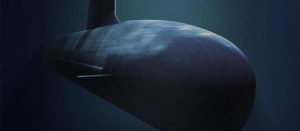Australia’s Minister of Defense, Linda Reynolds, and her French counterpart, Florence Parley, reaffirmed their “full commitment” to the Royal Australian Navy’s (RAN) SEA 1000 Future Submarine Program in a February 15 joint statement.
“Today we have reviewed the implementation of the Strategic Partnering Agreement [SPA] that underpins Australia’s Future Submarine Program,” the statement reads. “Both of us reaffirmed our full commitment to the program, in particular with respect to schedule and Australian Industry Capability.”
The statement follows comments by the head of the Australian subsidiary of French state-owned submarine builder Naval Group in which he reportedly questioned the capability of Australia’s defense and shipbuilding industry to participate in the submarine construction program.
“Naval Group’s Australia boss John Davis told The Australian newspaper he had concerns over the capability of local contractors, and suggested Australian businesses could fail to secure half of the value of the total contracts,” Reuters reported on February 14.
The Australian Department of Defense (DoD) and French state-owned submarine builder Naval Group also issued a joint statement on February 13 in response to Davis’ comments.
“At this stage of the program, the preliminary design phase of the Attack Class progressing through the activities with Naval Group’s design team in France and Adelaide and Lockheed Martin Australia’s design team in Adelaide,” according to the press release. “Over 137 Australian companies and organizations have subcontracts at this point.”
Australia and France concluded an intergovernmental agreement (IGA) for the construction of 12 Shortfin Barracuda Block 1A diesel-electric submarines (SSK), christened the Attack class, a diesel-electric derivative of the Barracuda-class nuclear attack submarine, in December 2016.
The Australian government and Naval Group signed a strategic partnership agreement (SPA) in February 2019 nearly 16 months behind schedule. As I wrote at the time:
The conclusion of the SPA was preceded by a two-year wrangle over contract details. Negotiations for the SPA kicked off in 2017 and were expected to be concluded by September 2018. However, various disagreements over intellectual property and warranty periods for defects, as well as possible production delays, caused the SPA signing date to be repeatedly pushed back.
Under the SPA, the 12 SSKs, except for a number of specialized parts, will all be assembled in Adelaide in South Australia, home to Australian government-owned shipyard Australian Submarine Corporation. Construction of the first sub is expected to kick off in 2022 with the first SSK delivered to the RAN by the middle of the 2030s.
“The build of a hull qualification section in Adelaide is projected to commence in 2023 to certify the Australian workers and construction yard equipment ahead of the construction of the first Attack Class Submarine,” according to the February 13 statement.
“Our current work is focused on understanding the capabilities in Australian industry for the manufacture of submarine equipment, which differ from the capabilities required to sustain existing equipment for our Collins submarine fleet.”
Given that the RAN’s Collins-class SSKs are expected to retire by 2026, the service life of the sub fleet may need to be extended.

































